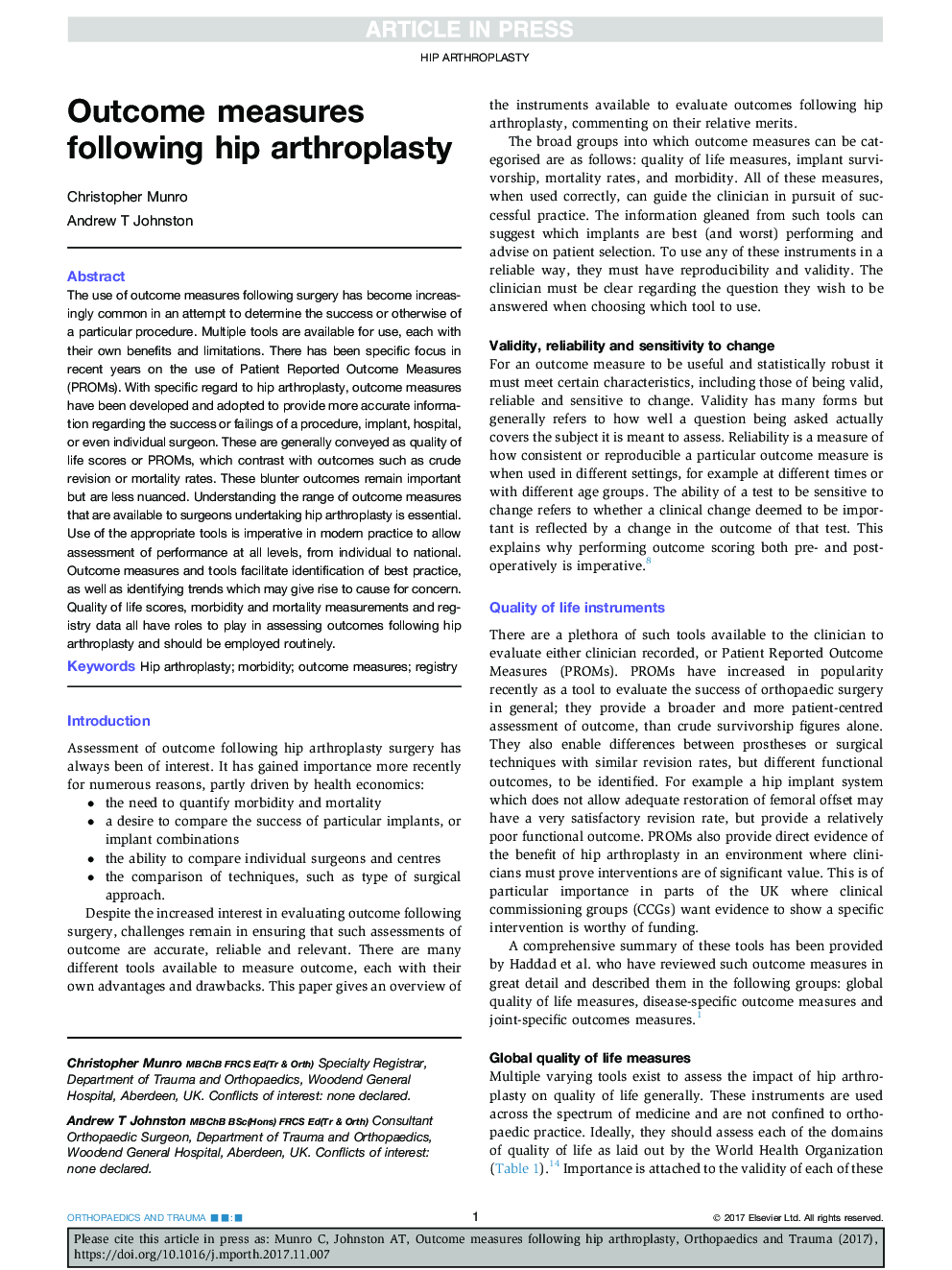| Article ID | Journal | Published Year | Pages | File Type |
|---|---|---|---|---|
| 8801972 | Orthopaedics and Trauma | 2018 | 4 Pages |
Abstract
The use of outcome measures following surgery has become increasingly common in an attempt to determine the success or otherwise of a particular procedure. Multiple tools are available for use, each with their own benefits and limitations. There has been specific focus in recent years on the use of Patient Reported Outcome Measures (PROMs). With specific regard to hip arthroplasty, outcome measures have been developed and adopted to provide more accurate information regarding the success or failings of a procedure, implant, hospital, or even individual surgeon. These are generally conveyed as quality of life scores or PROMs, which contrast with outcomes such as crude revision or mortality rates. These blunter outcomes remain important but are less nuanced. Understanding the range of outcome measures that are available to surgeons undertaking hip arthroplasty is essential. Use of the appropriate tools is imperative in modern practice to allow assessment of performance at all levels, from individual to national. Outcome measures and tools facilitate identification of best practice, as well as identifying trends which may give rise to cause for concern. Quality of life scores, morbidity and mortality measurements and registry data all have roles to play in assessing outcomes following hip arthroplasty and should be employed routinely.
Related Topics
Health Sciences
Medicine and Dentistry
Orthopedics, Sports Medicine and Rehabilitation
Authors
Christopher Munro, Andrew T. Johnston,
